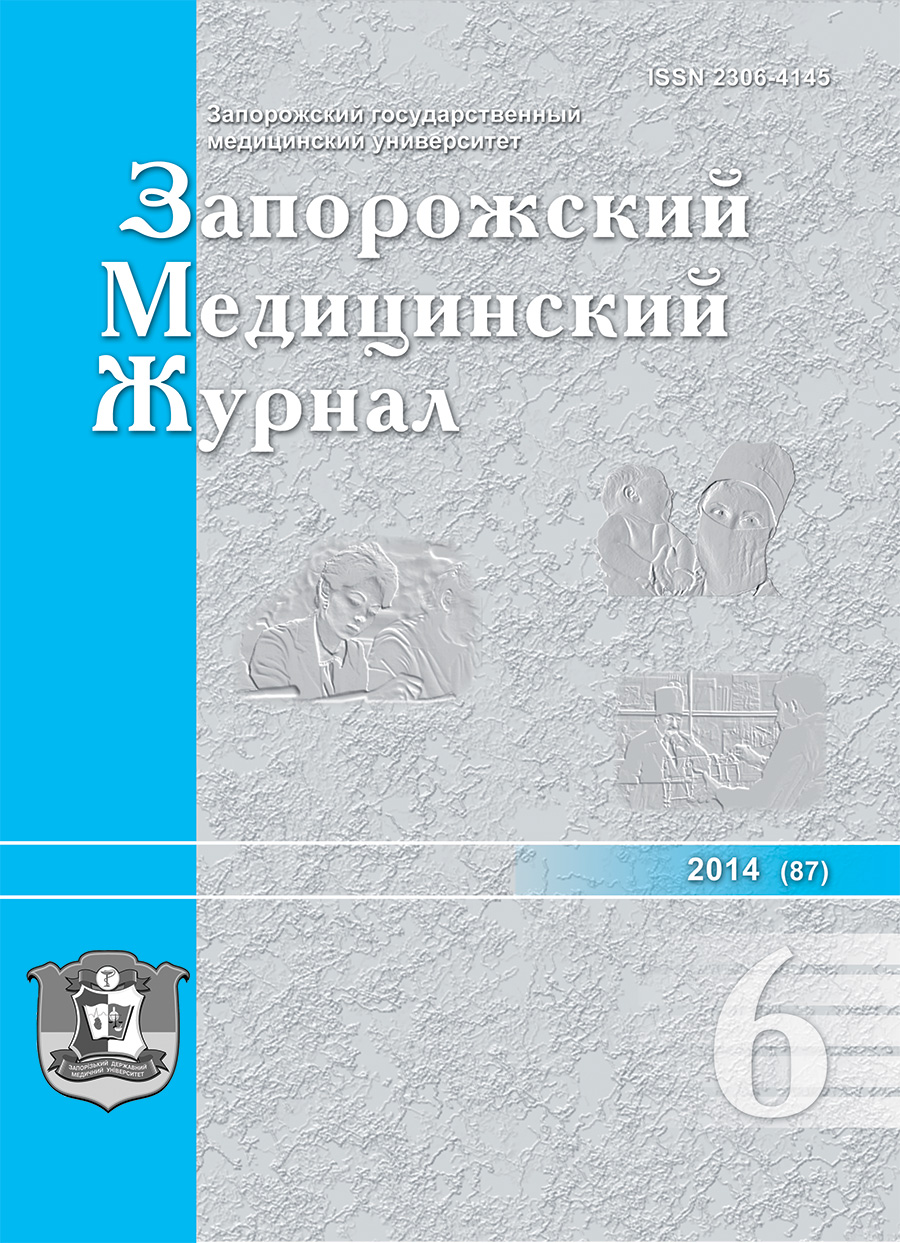PECULIARITIES OF THE CLINICAL COURSE OF THE EARLY RECOVERY PERIOD IN THE CEREBRAL ISCHEMIC HEMISPHERIC STROKE ON THE BACKGROUND OF THE COMPLEX REHABILITATION MEASURES
DOI:
https://doi.org/10.14739/2310-1210.2014.6.35765Keywords:
Brain Ischemia, Rehabilitation, TherapyAbstract
Aim. The important problem of the modern angioneurology is the diagnostics and treatment of cerebral stroke. Rehabilitation measures, especially during the early recovery period, are one of the strategic courses in the struggle against it.
Methods and results. The clinical-paraclinical study of 81 patients has been made for the purpose of the determination of clinical peculiarities of the course of the early recovery period in the cerebral hemispheric ischemic stroke patients on the background of the complex rehabilitation measures. It was determined, that majority of the patients the debut of the disease appeared only in the nidal deficiency with the gradual start in the active time of the day. The functional outcome and indices of the quality of life, as well as the level of the dependence of the outside help were substantially up to the evidence of the neurological deficit during the acuity of the disease.
Conclusion. The best dynamics of the reconstruction of clinical-neurological disorders, indices of the level of invalidization, as well as indices of the quality of life of patients in the early recovery period have been defined on the background of complex neurometabolic therapy.
References
Hommel, M., Trabucco-Miguel, S., Joray, S., Naegele, B., Gonnet, N., & Jaillard, A. (2009). Social dysfunctioning after mild to moderate first-ever stroke at vocational age. Journal Neurology, Neurosurgery & Psychiatry, 80, 371–375. doi: 10.1136/jnnp.2008.157875.
Daniel, K., Wolfe, C. D., Busch, M. A., & McKevitt, Ch. (2009). What are the social consequences of stroke for working-aged adults? A systematic Review. Stroke, 40, 431–440. doi: 10.1161/STROKEAHA.108.534487.
Dworzynski, K., Ritchie, G., Fenu, E., MacDermott, K., Playford, E. D. (2013). Guideline Development Group. Rehabilitation after stroke: summary of NICE guidance. British Medical Journal, 12, 346–361. doi: 10.1136/bmj.f3615.
Buchmayer, F., Pleiner, J., Elmlinger, M. W., Lauer, G., Nell, G., Sitte, H. H. (2011). Actovegin®: a biological drug for more than 5 decades. The Wiener Medizinische Wochenschrift, 161, 80–88.
Overgaard, K. (2014) The effects of citicoline on acute ischemic stroke: a review. Journal of Stroke and Cerebrovascular Diseases, 23(7), 1764–1769. doi: 10.1016/j.jstrokecerebrovasdis.2014.01.020.
Grieb, P. (2014) Neuroprotective properties of citicoline: facts, doubts and unresolved issues. CNS Drugs, 28(3), 185–193. doi: 10.1007/s40263-014-0144-8.
Mitta, M., Goel, D., Bansal, K. K., & Puri P. (2012). Edaravone - citicoline comparative study in acute ischemic stroke (ECCS-AIS). Journal of the Association of Physicians of India, 60, 36–38.
Hurtado, O., Hernández-Jiménez, M., Zarruk, J. G., Cuartero, M. I., Ballesteros, I., Camarero, G., et al. (2013) Citicoline (CDP-choline) increases Sirtuin1 expression concomitant to neuroprotection in experimental stroke. Journal of Neurochemistry, 126(6), 819–826. doi: 10.1111/jnc.12269.
Machicao, F., Muresanu, D. F., Hundsberger, H., Pflüger, M., & Guekht, A. (2012). Pleiotropic neuroprotective and metabolic effects of Actovegin's mode of action. Journal of the neurological sciences, 322, 222–227. doi: 10.1016/j.jns.2012.07.069.
Dávalos, A., Alvarez-Sabín, J., Castillo, J., Díez-Tejedor, E., Ferro, J., Martínez-Vila, E., et al. (2012). Citicoline in the treatment of acute ischaemic stroke: an international, randomised, multicentre, placebo-controlled study (ICTUS trial). Lancet, 380(9839), 349–357. doi: 10.1016/S0140-6736(12)60813-7.
Downloads
How to Cite
Issue
Section
License
Authors who publish with this journal agree to the following terms:
Authors retain copyright and grant the journal right of first publication with the work simultaneously licensed under a Creative Commons Attribution License that allows others to share the work with an acknowledgement of the work's authorship and initial publication in this journal. 
Authors are able to enter into separate, additional contractual arrangements for the non-exclusive distribution of the journal's published version of the work (e.g., post it to an institutional repository or publish it in a book), with an acknowledgement of its initial publication in this journal.
Authors are permitted and encouraged to post their work online (e.g., in institutional repositories or on their website) prior to and during the submission process, as it can lead to productive exchanges, as well as earlier and greater citation of published work (See The Effect of Open Access)

